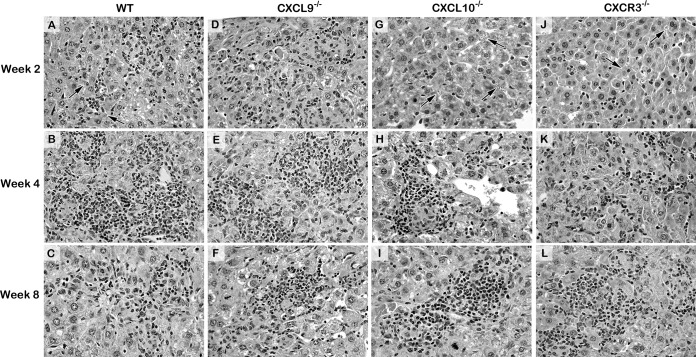FIG 6.
Histologic reaction to L. donovani infection 2 to 8 weeks after challenge in the livers of WT, CXCL9−/−, CXCL10−/−, and CXCR3−/− mice. The photomicrographs shown for WT mice are from mice infected in parallel with CXCR3−/− mice (histologic reactions were similar in WT mice infected in parallel with CXCL9−/− and CXCL10−/− mice). In WT mice, the inflammatory responses at parasitized foci at week 2 range from none (arrows) to developing granulomas (A); at week 4, granulomas are mature and coalescing (B); and at week 8, mature and involuting granulomas are parasite-free (C). (D to F) CXCL9−/− mice show an accelerated response with well-established mononuclear cell recruitment at virtually all infected foci at week 2 (D) and mature, largely parasite-free granulomas at week 4 (E). In contrast, in both CXCL10−/− mice (G to I) and CXCR3−/− mice (J to L), few parasitized Kupffer cells (arrows) have attracted inflammatory cells at week 2 (G, J); however, by week 4 (H) or week 8 (L), granulomatous responses are well established in both groups. Magnifications, ×400. See Fig. S5 for the corresponding low-power photomicrographs.

